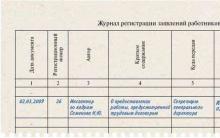Paper rolls make original vases. They can be of different sizes - from small to floor-standing, made in different ways. A master class on weaving from newspaper tubes, thanks to step-by-step photographs and video tutorials, will help you easily understand the technique and make beautiful products using it.
Weaving a vase from newspaper tubes: detailed MK with photo
Let's take an example of weaving a floor vase from newspaper tubes for beginners.
To make vases of different shapes and diameters, you can use a stand and thick paper circles of different sizes as a base.

This allows for a wide variety of work. The circles are attached with clothespins at different heights, which results in vases that are different in shape.
Step 1. Rolling newspaper tubes, coloring them and drying them. Large vases require 100 or more tubes.
Step 2. Work starts from the bottom. Let's make it using a braided method with a diameter of 38 cm.

Step 3. Next, install a stand on the finished bottom. Place the first circle of the base measuring 46 cm at a height of 7 cm. Now you need to weave the rope in a circle, directing the posts to the center of the base. As soon as the height of the vase has reached the circle, we remove the latter to the side.
Step 4. Attach the next circle with a diameter of 38 cm at a height of 37 cm to the stand and make 3 rows with a rope. Then you should place the base at a height of 14 cm from the bottom. Weave another 7 cm, also directing the posts towards the center.

Step 5. Change circles again. The size of the 3rd circle is 28 cm. Place it at a height of 19 cm. Weaving goes to the edge of the base, then remove the circle.

Step 6. Next, place a 20-centimeter circle at a height of 26 cm and again weave to the edge. That's it, the work with the circles is finished. Now you will need a pipe, for example, from paper towels. It is needed to make the neck. We continue working until we reach the edge of the base. It is important to note that with each change of circles, the inside of the vase must be coated with varnish in 1-2 layers and dried thoroughly.

Step 7. Varnish the finished product.

This is what our interior work looks like.

Free video lessons
Now let's look at video lessons about weaving a vase from newspaper tubes. It will be interesting for both beginners and more experienced craftsmen.
Ideas for weaving vases from newspaper tubes
Vases come in different shapes, sizes and purposes. They are also woven differently. Below are several options with photos.
No. 1. Miniature pencils are a very necessary thing, especially in houses where young “artists” live.

No. 2. Another type of small vases that are suitable for sweets in the kitchen. They also serve as great storage for sewing items or to store various trinkets.

No. 3. Vase woven in a spiral. You can put artificial flowers or ikebana in it.

No. 4. Vases can be made not only by traditional weaving, but also by gluing circles made from bundles of different sizes, which are glued together.
No. 5. Another unusual way is to glue the bundles lengthwise to each other. The ends of the tubes are cut off from the top along an oblique line and you get an original thing. Such a vase is additionally strengthened with two transverse tubes at the top and bottom.

Weaving a spiral vase
Step 1. Stock up on paper vines.
Step 2. We make a wicker bottom. We take 4 triples of tubes to get started.


Step 4. Having finished the bottom, we move on to the walls. The spiral is woven in six bundles, the rest are folded and connected with a clothespin at the top. The tubes are placed on top of each other and bent. They continue weaving to the very top.



Step 5. The bundles remaining inside are pulled out and intertwined with each other.

Step 6. Coloring.

Following any of the proposed MKs, it will be very easy to make a vase for your home or as a gift for someone in the handmade style.
The skill of turning waste paper into beautiful and useful products is called paper weaving. Instead of throwing away the newspaper you read, you can use it to create either a pincushion or an entire laundry basket. And the photos of vases made from newspaper tubes are delightful.
Where to begin?
To master the weaving technique, you will need desire and a set of certain tools and materials. First of all, you need paper:
- a newspaper that has already been read;
- brochure of any store (not glossy);
- packaging of newsprint or office paper;
- cash register tape, etc.

Experienced craftswomen prefer to work with purchased newsprint, but regular brochures are also suitable for a beginner. Before twisting them, the material is cut into strips with a width of 7 to 10 cm. This depends on the knitting needle used in the work; the thicker it is, the wider the sheet of newspaper.

Additionally, you will need:
- It is a toe knitting needle, but it is advisable to use it with a thickness of 1 mm.
- PVA stationery glue or carpentry instant.
- Kitchen knife, sharpened.
- Scissors.
- Construction colors.
- Primer.
- Water-dispersed varnish.
- Braiding form.
- Decorative elements.

Sequence of work
A beautiful vase made from paper tubes will not be made in a few hours, but the time investment is worth it. By following all the instructions, in the end, from under the hands of the craftswoman, a product will come out worthy of being exhibited in a museum.



Making newspaper tubes
To do this, cut newspaper sheets along the length of the spread into three equal parts (at least 7 cm). We select one of the sheets and place it in front of us, place a knitting needle on the corner and wind the paper onto it. At the end of the twist, a drop of glue is added, which will hold the finished vine together. We remove the workpiece from the working knitting needle and continue in the same spirit.

The angle between the knitting needle and the sheet should be made as small as possible.

The vine should not widen too much at one end and narrow at the other. Hollow tubes will also not give the finished product the desired appearance.

Dyeing the vine
There is practically no universal composition for coloring newspaper tubes. Each craftswoman, by trial and error, selects the paint independently. The most commonly used stains are water or alcohol stains. It is better to work with the latter outside or on a balcony with an open window, as they smell strongly.

And also, “Richard’s cocktail” is in demand. To create it you will need:
- construction primer;
- color (color at your discretion);
- water based varnish.

All ingredients must be mixed in a 0.5 liter jar. First, 300 ml of primer is poured in, followed by three tablespoons of dye and 10 tablespoons of varnish. This is an approximate scheme for adding ingredients and it all depends on the desired color of the future product.

After the tubes dry, their color fades a little.

Recently, craftsmen often replace varnish with Dufa impregnation, claiming that it achieves the effect of gluing seams. You can paint several tubes at once with a brush.

You can dry the tubes with a hairdryer if you don’t have time to wait, or simply lay the painted vine on a plastic mat in a checkerboard pattern. This is necessary so that the tubes do not stick together and become moldy. You can see how to make a vase from newspaper tubes below.

Weaving the finished product
At the beginning, you need to choose a form for braiding, because without it a beginner will not be able to maintain the desired shape. For these purposes, any jar or bottle is suitable, which you can then leave in place and pour water into it.






Technical points
A master class on making a vase from newspaper tubes will require mastering some constantly repeating processes:
The growth (lengthening) of the vine occurs by pushing its thinner end into the expanding edge. To achieve an imperceptible transition, you will need to make cuts with scissors (at an acute angle) and then perform the procedure.


The braiding of the base tubes begins on either side. To do this, one tube is bent and applied (encompassing the main tube) as close as possible to the core of the crossed vine. The lower end rises up, and the upper end is brought under the bottom of the base lying next to it.

The walls of the product are woven in the same way, only now the top turns into the front, and the bottom into the back tube.

After completing the bottom, the working tubes are pushed into several rows of weaving using a knitting needle and carefully trimmed. This pattern is repeated when weaving the product is completed.

To form the bottom, you need to measure the volume of our shape in its widest part. And for every 1.5-2 cm there should be a tube of base. If the girth is 250 mm, then at the base of the bottom you need to put 7 newspaper tubes crossed with each other. As a result, there should be a snowflake with 14 ends on the work surface.

Step-by-step instructions for beginners
You need to start braiding the resulting snowflake, first grabbing two tubes at a time. When the distance between the main vine becomes a little more than two centimeters, they need to be divided. After reaching the required bottom diameter, the base tubes are lifted up.


You can lift the vine by bending one after the other through its bottom. The procedure is repeated until all the tubes are facing up.


You can complete the weaving by bending, cutting the tubes, or by placing posts between the loops. The right base tube is pushed towards the left one over three rows of weaving and so on until the very end.

The vase made from newspaper tubes is almost ready. To complete it, the product is primed several times using glue and water in a 1:1 ratio. After each treatment, you must wait until it dries completely. And at the very end, a layer of varnish is applied (several possible).

Weaving a vase from newspaper tubes will bring pleasure from the process of its creation and surprise to every guest. Let your braids bring only joy!


Photo of vases made from newspaper tubes












Yulia Khripunova
We are together, as a team, crafts crafting. We won’t throw anything away, because we value everything!
Stylish DIY vase.
Master Class
We will need:
for making a vase:
- newspaper;
Paper towel tubes or cut cardboard blanks from Lenolium tubes;
Knife or scissors
PVA glue;
Ballpoint pen refill;
for decorating a vase you can use:
gouache of any color or others paints;
beads, beads, rhinestones and other decorations;
colored paper;
PVA glue;
colorless varnish for coating the finished product
Progress
1. From newspapers cut into strips.

2. Now we fold straw using the rod from the handle, hold the rod at an angle.

3. At the end, lubricate the edge with glue so that the tube did not unfold.

4. Take the tube and start gluing it straws, glue the tube in a circle. Then you can tie it with an elastic band so that the tubes are glued tightly. We are waiting for it to dry. Whether or not to trim the top of the vase.

5. When the tubes will dry out, paint them any color.


Craft from inexpensive waste material. Delight your family and friends with new ideas. Such a vase can be used even a preschooler can make one.
Good gift.
The product is ready - and very “nothing”,
And tomorrow I’ll sit down again and do more!
Publications on the topic:
One of the main attributes of the New Year is the Christmas tree. And in every house on this holiday there is a Christmas tree decorated with different outfits. She.
Dear colleagues, I present to your attention a master class made from newspaper tubes, what beautiful things it would seem to come out of.
I offer you a master class on making a gift for your mother, “A beautiful plate for your mother.” There is not much time left before the holiday of March 8th.
Technological map Purpose: This hat can be used in children's role-playing games, as surprise moments, or become wonderful.
New Year is always a sea of gifts. Adults, as usual, go to the shops, and children try to make something with their own hands. Crafts made.
Master Class. "Vase with flowers. 1. Take colored cardboard of any color 2. colored paper, yellow, red 3 Scissors, ruler, pencil, PVA glue,.
Hello. I can teach you how to make a simple but effective bouquet. We need corrugated paper in two colors, red and green for tulips.
A floor vase is a stylish decoration for any interior. Moreover, if it is made of newspaper tubes - this unpretentious, at first glance, material actually looks very attractive and successfully emphasizes the originality of the home. Do you want to get this kind of decor too? There is nothing simpler - here are step-by-step instructions for beginners with a useful supporting video.
Forming the bottom of the product
Before you start weaving, prepare the supplies and tools:
- twisted newspaper tubes;
- PVA glue;
- scissors;
- stationery knife;
- clear varnish or paint;
- materials for decorating a vase: ribbons, sparkles, beads.

The first stage of work is weaving the bottom. First, form four bundles of three newspaper flagella each. Fold them crosswise. Prepare another flagellum - it will be a worker. Then take this working tube, fold it in half and braid it around the base so that it wraps around each of the four bundles. You need to weave four to five rows in a circle, increasing the working tube as necessary.
Next, begin to wrap the working flagellum around every two tubes of the base. Thus, it is necessary to weave four more rows. Then separate all the flagella of the bottom and braid each of them with a working tube, that is, all 12. The number of rows is at your discretion. When the bottom reaches the width you need, cut the end of the working rope and secure it with glue to the finished base.

We weave the “body” of the vase
The direct “body” of the product is woven as follows:
- Bend the protruding tubes upside down.
- Take any disc-shaped object - a lid, plate, bowl, etc. Insert it between the vertical posts.
Advice. The radius of the form-building object should be wider than the radius of the bottom.
- Secure the ends of the vertical tubes with an elastic band. Identify two working strands and braid them around the main tubes in a circle, repeating the shape of your disc-shaped object.

- When you have weaved the “body” of the vase to the required height, remove the form-building object.
Advice. At this stage, you should coat the inside of the vase with varnish so that the structure does not weaken over time.
- Start weaving the neck - gradually bring the vertical flagella closer together, thereby narrowing the vase.
- When the neck is completed, spread the tubes slightly, bend them in a semi-horizontal position and weave the border. To do this, you need to wind the bundles under each other in a circle: the first - under the second, the second - under the third, and so on.

- After completing the border, trim the ends of the flagella and fix them with glue on the outside of the finished product.
- Cover the vase with varnish or glue. When the product is dry, you can start decorating.
As you can see, making a vase from newspaper tubes with your own hands is not at all difficult, so don’t be afraid to experiment!
Making a vase from newspaper tubes: video
DIY vase made from newspaper tubes: photo






Recently, newspaper weaving has become increasingly popular. After all, this type of creativity has many advantages: availability and low cost of materials, plenty of room for imagination, environmental friendliness associated with the processing of waste material into new interesting things. One of such spectacular interior details can be a vase made from the most ordinary newspaper tubes, made by yourself.
Making a flower vase from newspaper tubes: master class
This master class for beginners will tell you how to make this vase with your own hands. This spectacular product can be an excellent interior decoration, as well as a gift for friends or relatives.
To work on the vase you will need:- Glass jar or bottle
- Newspapers and knitting needle
- Glue (you can use PVA)
- Dye
- Clear nail polish
First we prepare tubes from newspapers.
The sheets need to be cut into 4 strips lengthwise. Then we wind each strip onto a knitting needle at an angle of 45 0, grease the end of the strip with glue so that the tube holds its shape. When working correctly, one end of the tube will be slightly narrower than the other. Due to this, the tubes can be extended by inserting one into the other with a drop of glue.
Now let's look at weaving a vase step by step.
Three long tubes (connected from two), crossed with each other:
We begin to braid the middle with two other tubes, alternating their position relative to the main ones. Extend the tubes as needed.
We weave the bottom to the desired diameter.
We bend the first one, place it on the second one, then lift the second one and place it on the third one.
We finish the row the same way. In the next row, bend the tubes a little further to create a slope.
We continue weaving with the jar. Also, if necessary, lengthening the tubes.

If the vase is for fresh flowers, you can insert any suitable vessel and braid it.
Weave to the desired size and shape. In our case, this is the neck of the bottle; we fill the ends of the tubes.
Mix gouache or acrylic paint with PVA glue and paint the product with it.
After drying, you can highlight the slanting lines of the vase with golden powder or a slightly contrasting shade of paint.
Then we coat the vase with varnish. The work is done!
Making a beautiful spiral vase from newspaper tubes
The next master class, which we will analyze, is dedicated to this spiral vase:

- Newspapers and knitting needle
- Plastic bottle
- Clothespins
- Scissors
- Glass shot glass
- Mahogany varnish
First you need to prepare newspaper tubes in the same way as described in the previous master class. You will need 108 of them.
First you need to cross two tubes and add one working tube to them.
The lower end of the tube under the working one must be wrapped and directed to the next one. We place a bottle with the neck cut off in the center of the weaving and repeat the pattern in a circle.
We continue weaving, pressing the spiral to the bottle.
In this way we braid the entire plastic form and make a few more turns.
The vase can be expanded to the desired size, then the ends of the tubes need to be bent in the opposite direction, cut and secured with glue. To prevent the tubes from unwinding while the glue dries, we press them down with clothespins.
To make the bottom, we twist the tubes tightly onto the walls of the glass stack, thickly coating each layer with glue.
Then we remove the stack and coat the workpiece with glue again.

Glue the bottom to the vase.
We coat the finished work several times with impregnation varnish. The vase is ready! Since there is a plastic container inside, you can pour water into it and place fresh flowers.
A floor vase is a stylish and bright interior decoration. In the next master class you will find a photo and description of the work step by step.
To work you will need:- Newspaper tubes
- PVA glue
- Stationery knife and scissors
- Varnish or paint
- Optional ribbons, beads and sparkles for decoration
We cross 4 bundles of tubes of 3 pieces each.
We take another working bundle, braid it with each base bundle, and thus go through 4–5 rows, building up the tubes.
Then we begin to wrap the working tourniquet around every 2 tubes of the base, passing another 4 rows. After this, we separate all the paired tubes and braid each one, the number of rows depends on what size bottom you need. Next, we cut the working harness and glue it.

We bend the tube base of the bottom upward. Place a bowl or other similar object in the center, preferably wider than the bottom.
We fasten the ends of the tubes with an elastic band. We select two working strands and braid them into vertical tubes, repeating the shape of the bowl. Then we remove the object from the center.
We begin to weave the neck, bringing the vertical tubes closer together. Then we slightly spread the tubes to weave the border. We place the tubes under each other in a circle. We cut the ends of the tubes and glue them together.
Then we cover the vase with varnish or glue and decorate it as desired. The floor vase is ready!
Video on the topic of the article
For those who want to take a closer look at the topic and get new ideas for creativity, we have prepared a selection of video tutorials on weaving vases from the easiest-to-use newspaper tubes:











Appointment of Cardinal Richelieu as First Minister
Love horoscope for the sign Libra for September
Horoscope for April Pisces the Witch
Prayers to quit smoking
Strong conspiracies to make a husband love only his wife